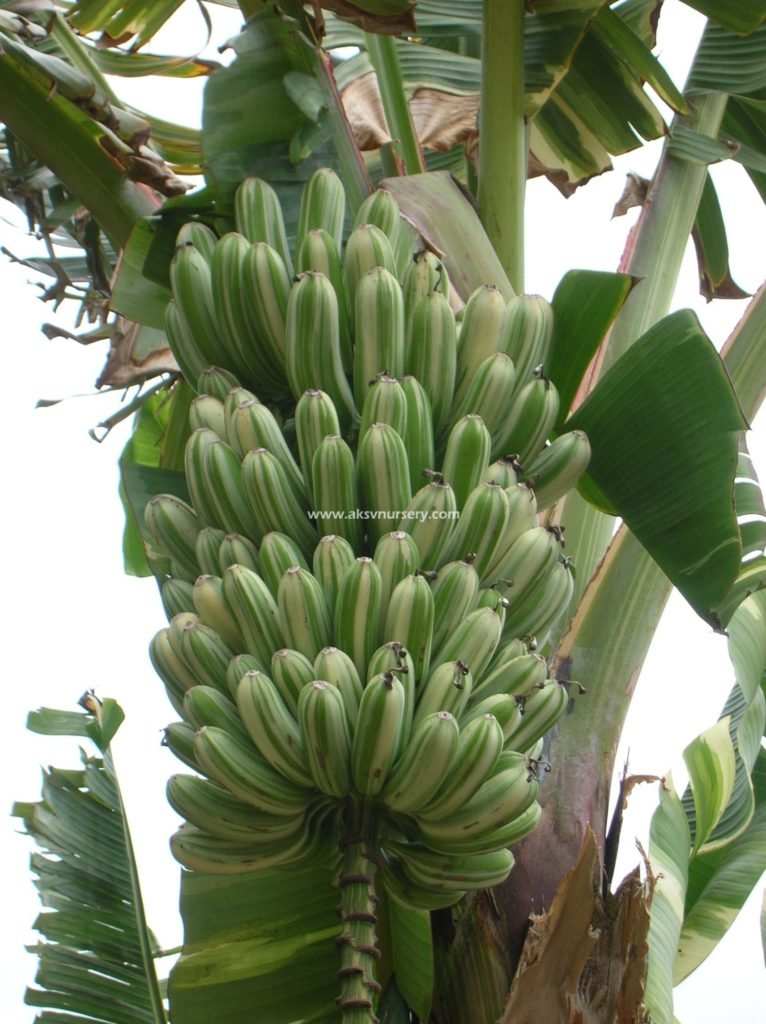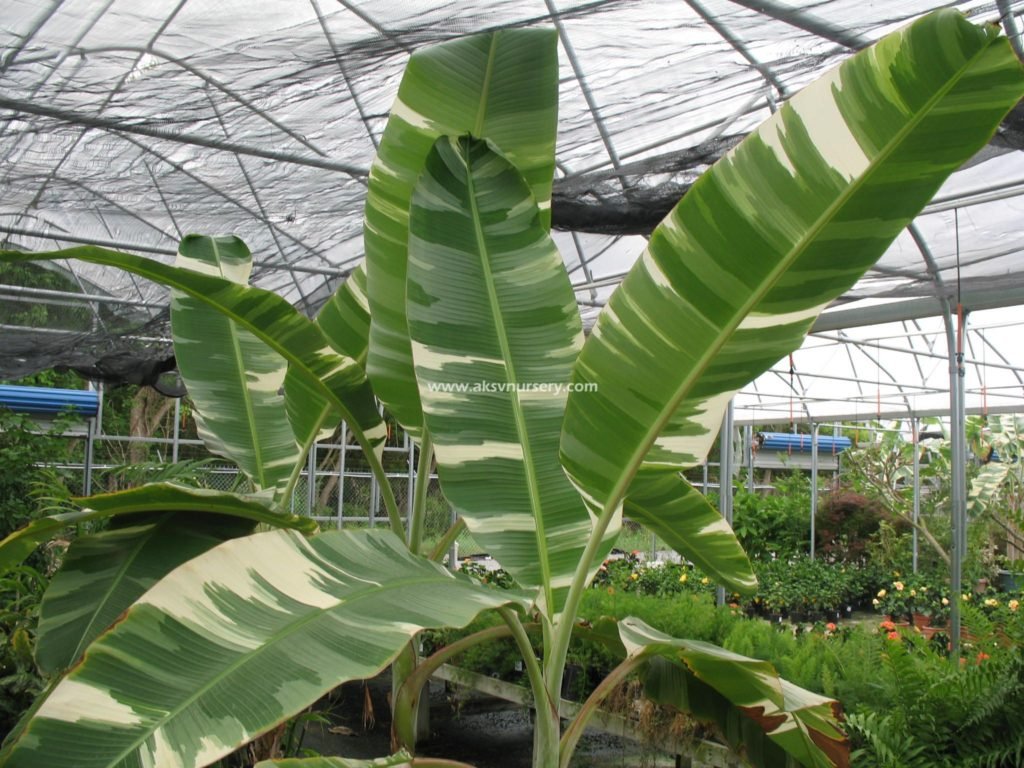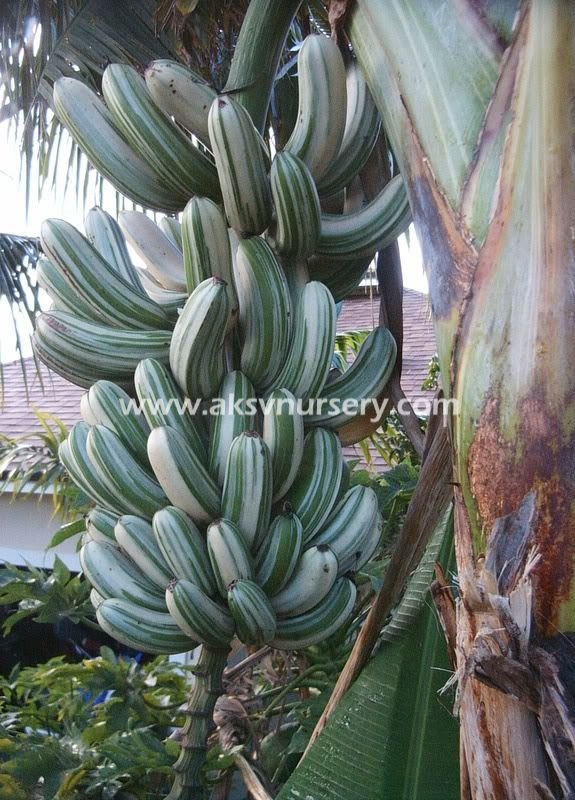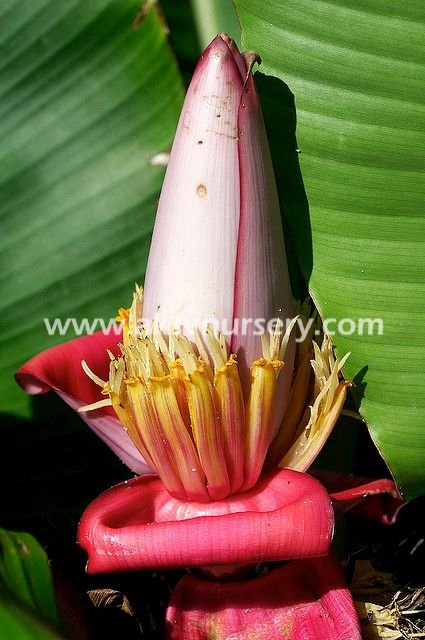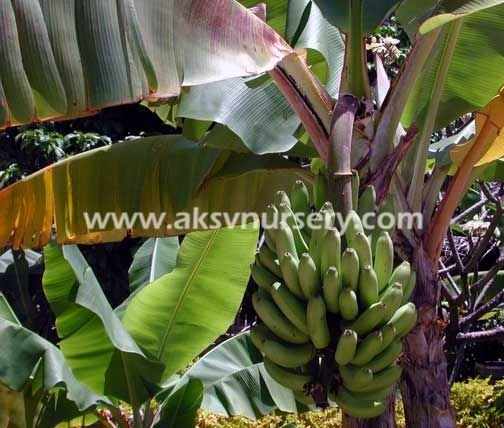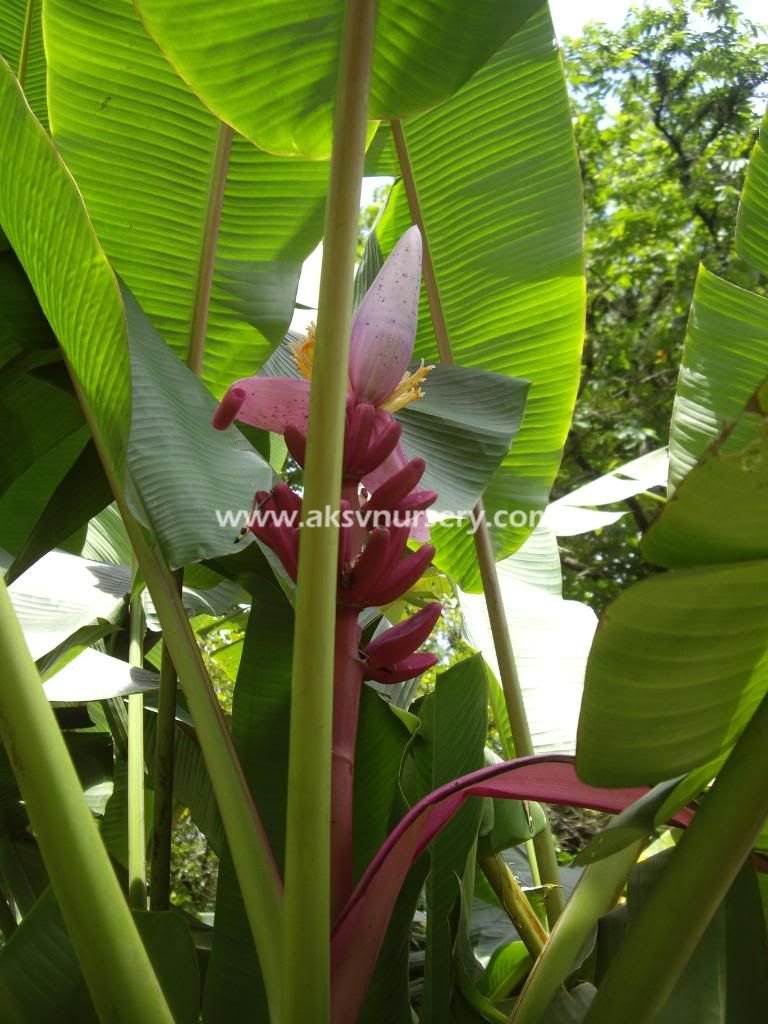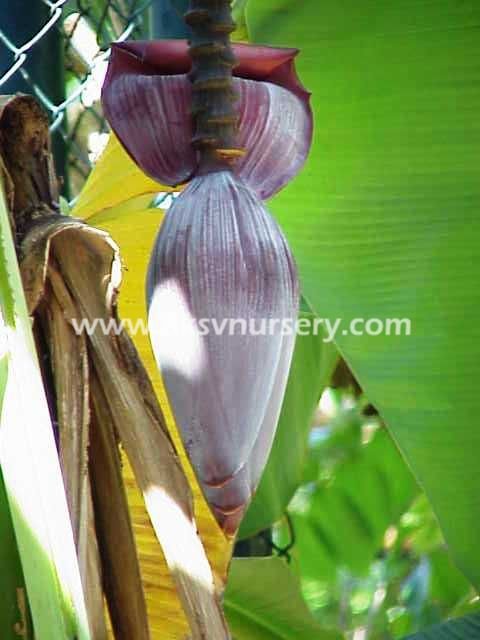Musa sp.
Family: Musaceae
Banana, Bananier Nain, Canbur, Curro, Plantain
Origin: Indo-Malaysian region reaching to Northern Australia
Bananas are fast-growing herbaceous perennials arising from underground rhizomes. The fleshy stalks or pseudostems formed by upright concentric layers of leaf sheaths constitute the functional trunks. The true stem begins as an underground corm which grows upwards, pushing its way out through the center of the stalk 10-15 months after planting, eventually producing the terminal inflorescence which will later bear the fruit. Each stalk produces one huge flower cluster and then dies. New stalks then grow from the rhizome. Banana plants are extremely decorative, ranking next to palm trees for the tropical feeling they lend to the landscape. The banana inflorescence shooting out from the heart in the tip of the stem, is at first a large, long-oval, tapering, purple-clad bud. As it opens, the slim, nectar-rich, tubular, toothed, white flowers appear. They are clustered in whorled double rows along the the floral stalk, each cluster covered by a thick, waxy, hood like bract, purple outside and deep red within. The flowers occupying the first 5 – 15 rows are female. As the rachis of the inflorescence continues to elongate, sterile flowers with abortive male and female parts appear, followed by normal staminate ones with abortive ovaries. The two latter flower types eventually drop in most edible bananas. The ovaries contained in the first (female) flowers grow rapidly, developing parthenocarpically (without pollination) into clusters of fruits, called hands. The number of hands varies with the species and variety. The fruit (technically a berry) turns from deep green to yellow or red, and may range from 2-1/2 to 12 inches in length and 3/4 to 2 inches in width. The flesh, ivory-white to yellow or salmon-yellow, may be firm, astringent, even gummy with latex when unripe, turning tender and slippery, or soft and mellow or rather dry and mealy or starchy when ripe. The flavor may be mild and sweet or subacid with a distinct apple tone. The common cultivated types are generally seedless with just vestiges of ovules visible as brown specks. Occasionally, cross-pollination with wild types will result in a number of seeds in a normally seedless variety. Bananas require as much warmth as can be given them. Additional warmth can be given by planting next to a building. Planting next to cement or asphalt walks or driveways also helps. Wind protection is advisable, not for leaf protection as much as for protection of the plant after the banana stalk has appeared. During these last few months propping should be done to keep the plant from tipping or being blown over.
Musa Praying Hands – produces perhaps the most unusual and distinctive of all banana fruits. Two adjacent hands of bananas are fused, giving the appearance of praying hands. This is not just a collectors item, the fruits are delicious ripe, containing a hint of vanilla flavor. When totally ripe, individual bananas can be carefully separated from each other. An excellent all-around plant with some wind resistance; it is very collectible.
All eating bananas are triploid varieties of M. acuminata x bulbisiana.
There are numerous cultivars of cooking banana.

